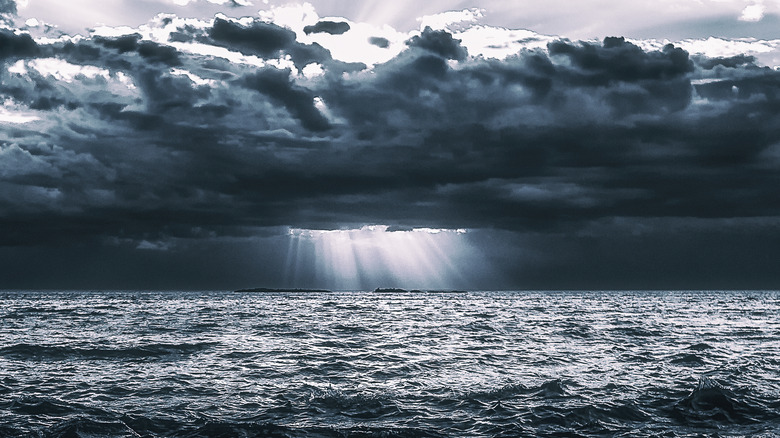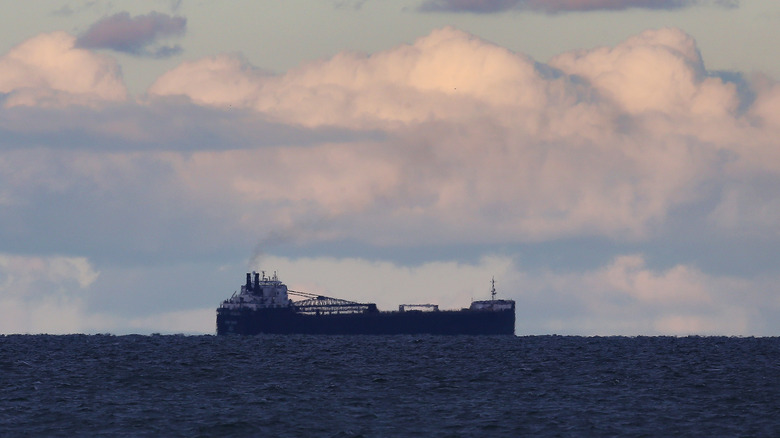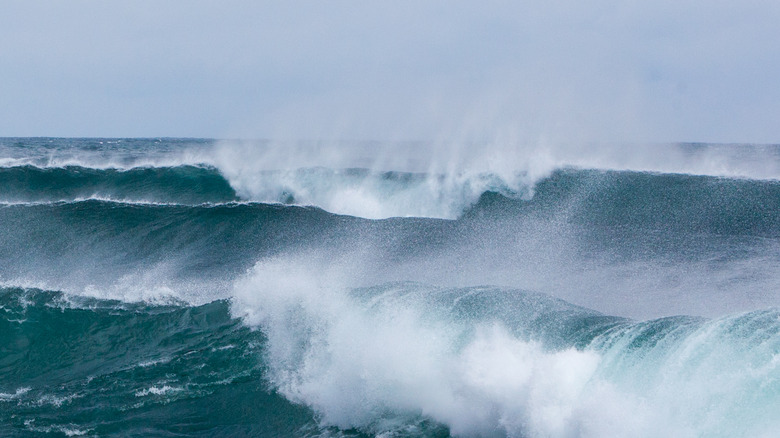The Horrific Sinking Of The Edmund Fitzgerald Remains An Unsolved Mystery
In the state of Michigan, one of the most tragic tales of mystery and woe is that of the Edmund Fitzgerald, a massive freighter ship that capsized during a storm over Lake Superior in November of 1975. To this day, nobody knows exactly what happened, though thorough investigations have since been carried out that managed to ascertain a few crucial bits of information, including the sunken ship's location (via National Weather Service). Experts have mused over the possibilities for decades, though the questions still linger like shifting waves in the dead of night.
If the name "Edmund Fitzgerald" sounds familiar, you've probably heard Gordon Lightfoot's 1976 haunting hit song "The Wreck of the Edmund Fitzgerald," in which he chronicles the harrowing saga of the crew's demise as they braved the treacherous waters of Lake Superior when "the gales of November came early." Lightfoot's song, despite the creative liberty it takes with regard to the specific events and supposed dialogue between crew members, has become something of a timeless classic amongst Michigan residents and all who remember the horrible news that swept headlines after the shipwreck.
Where was the Edmund Fitzgerald headed?
According to The Weather Network, the mighty Edmund Fitzgerald embarked upon its very first voyage on June 7, 1958. Once upon a time, it held the title of the largest ship on the Great Lakes and traveled between various cities carrying iron ore, and for 16 years, the 729-foot vessel reigned supreme as king of the freshwater fields and executed some 748 trips before it went under (via Awesome Mitten).
On November 9, 1974, it departed from a port in Superior, Wisconsin and took to the horizonless expanse of water that ultimately became its final resting place. A day later, the Edmund Fitzgerald encountered hurricane grade winds and titanic waves that are believed to have towered some 35 feet above the surface of the lake, and given the full cargo of heavy ore, the storm turned out to be more than the ship could handle (per The Weather Network).
What caused the Edmund Fitzgerald to sink?
It's still unknown exactly how the ship sank, but many believe that the Edmund Fitzgerald started taking water over its hull as the storm over Lake Superior got worse and worse. Given that the ship was filled to capacity with iron ore and was sitting low in the water already, the colossal waves had no trouble making it on deck. Then, possibly because of loose hatch covers, large amounts of water were able fill the inner pockets of space throughout the ship, causing it to lose buoyancy. Other researchers believe it possible that the vessel hit a shallow ledge of rocks near Caribou Island and severely damaged its hull in the process. The abrasions to the front of the ship allowed an excess of water to enter after it met a gigantic wave head on, after which it took a nosedive to the bottom of the lake some 530 feet below the surface, as the National Weather Service reports.
According to Awesome Mitten, the mourning families of the 29 men who perished aboard the Edmund Fitzgerald were never able to give them a proper burial. Their bodies reside in that deep cellar of Lake Superior, and as Gordon Lightfoot lamented in his iconic anthem, "They might have split up or they might have capsized, they may have broke deep and took water, and all that remains is the faces and the names of the wives and the sons and the daughters."


